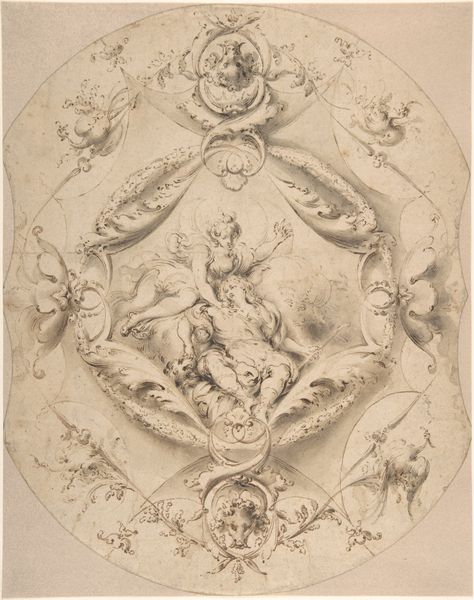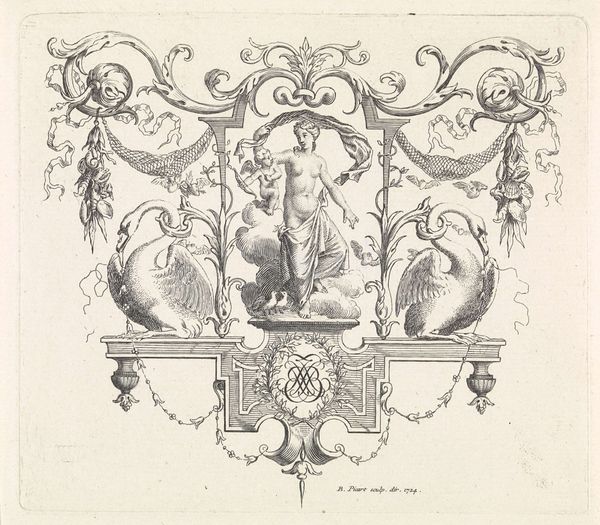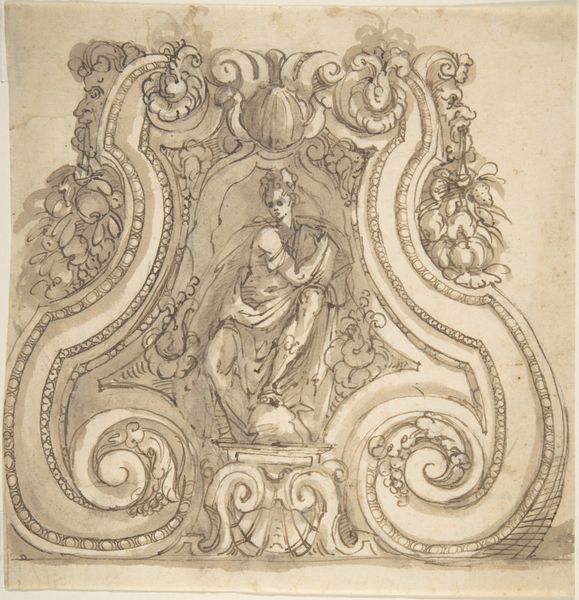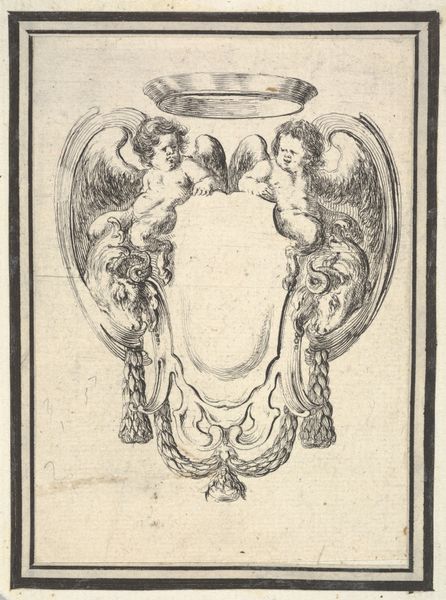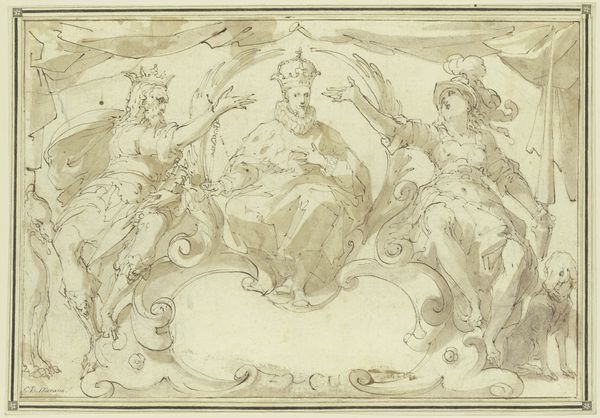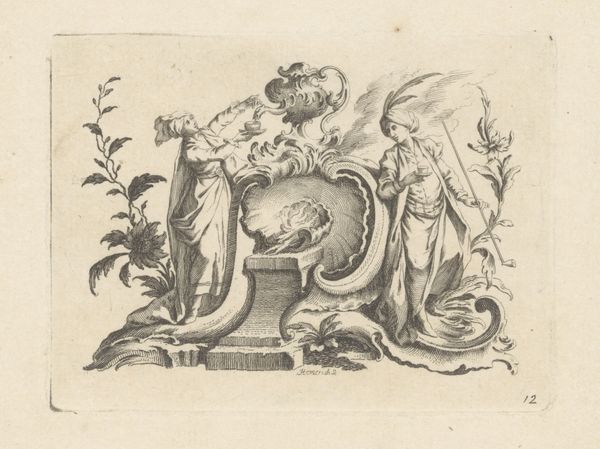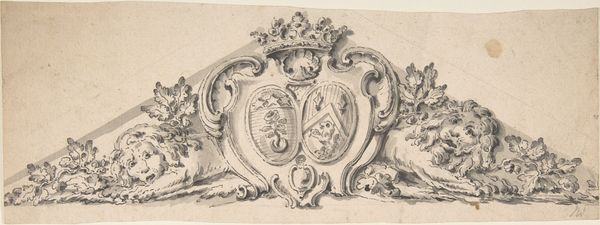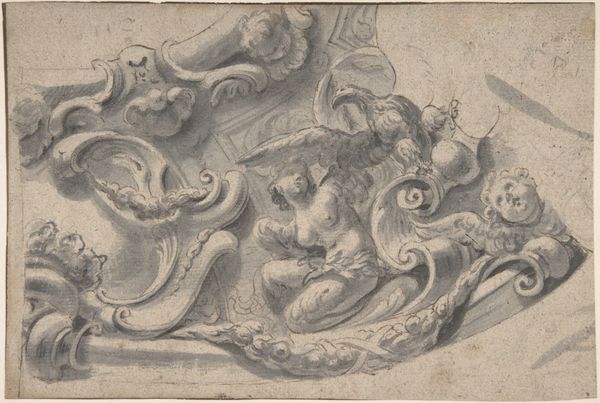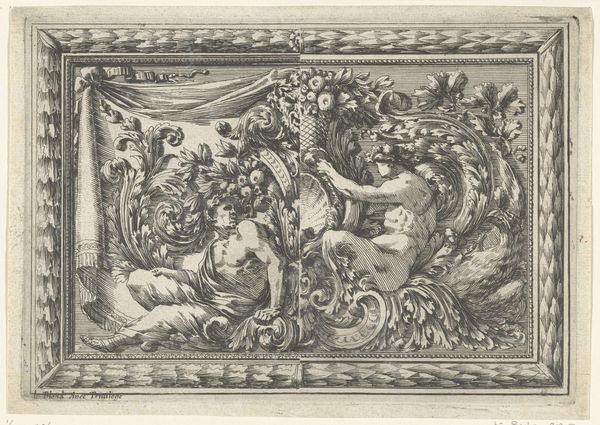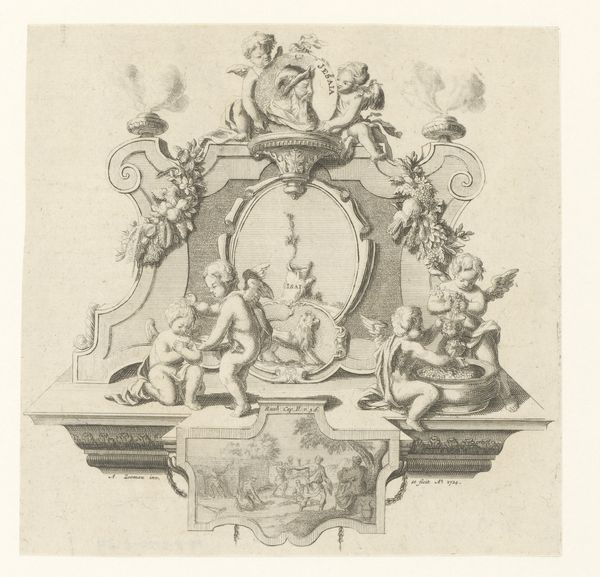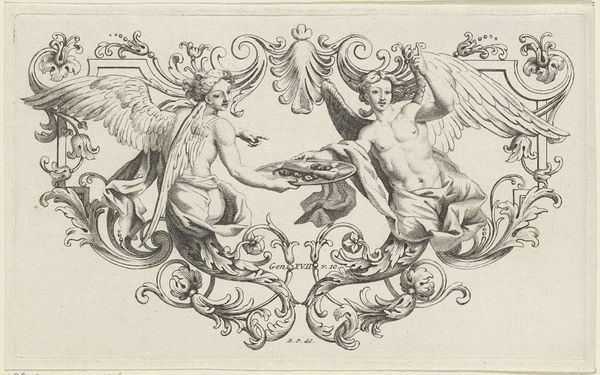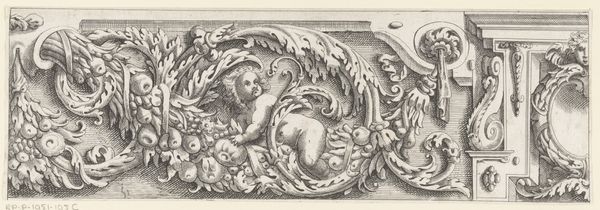
drawing, print, etching, ink, pen
#
drawing
#
narrative-art
#
baroque
#
pen drawing
# print
#
etching
#
figuration
#
ink
#
pen
#
history-painting
Dimensions: sheet: 3 7/16 x 5 13/16 in. (8.7 x 14.8 cm)
Copyright: Public Domain
Curator: The etching before us, rendered in pen and ink, is titled "Cartouche with Moses Striking the Rock," created by an anonymous artist in the 18th century. What catches your eye about it? Editor: The immediate impression is one of dramatic dynamism. The figures are captured in very active poses and situated inside the swirling ornament of the cartouche that seems to amplify the sense of movement. Curator: Precisely! The cartouche, a decorative frame, houses this significant biblical narrative, a pivotal moment when Moses, at God's command, strikes a rock to provide water for the Israelites in the desert. Viewing this scene, the story becomes a powerful allegory of divine intervention and leadership. What about the arrangement? Editor: The composition follows a strong diagonal leading from Moses to the kneeling figure below, directing the viewer’s eye and emphasizing the contrast between power and supplication. This reinforces the dramatic action. Also, notice the shell form at the top, drawing your eye back to the upper portion. Curator: It’s important to note the role of cartouches within a social context. In the 18th century, these would often appear in decorative schemes that affirmed societal hierarchies and promoted models of piety. Here, we see Moses presented as the benevolent leader answering his peoples prayers, thus supporting traditional structures. Editor: Speaking of which, let’s consider the treatment of the figures. There is strong chiaroscuro created through dense cross-hatching and linear shading to convey form and mass. See how the play of light emphasizes their three-dimensionality and brings them forward into the viewer's space. Curator: Absolutely, that tension adds to the emotional impact! Moreover, understanding that this piece likely circulated as a print offers insight into the visual culture of the period. It illustrates how stories of faith were disseminated, reinforcing community standards but potentially also serving as a symbol of both faith and power during periods of immense political upheaval. Editor: Thinking of how this image manipulates formal elements like line and composition is compelling. Considering this as part of religious history gives us more context to appreciate how art was both reflective and constitutive of its period. Curator: It certainly offers ample opportunities to examine power, faith, and visuality.
Comments
No comments
Be the first to comment and join the conversation on the ultimate creative platform.
